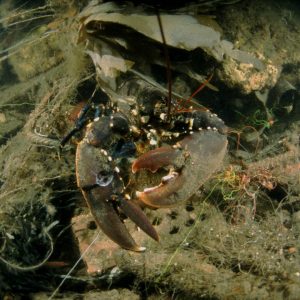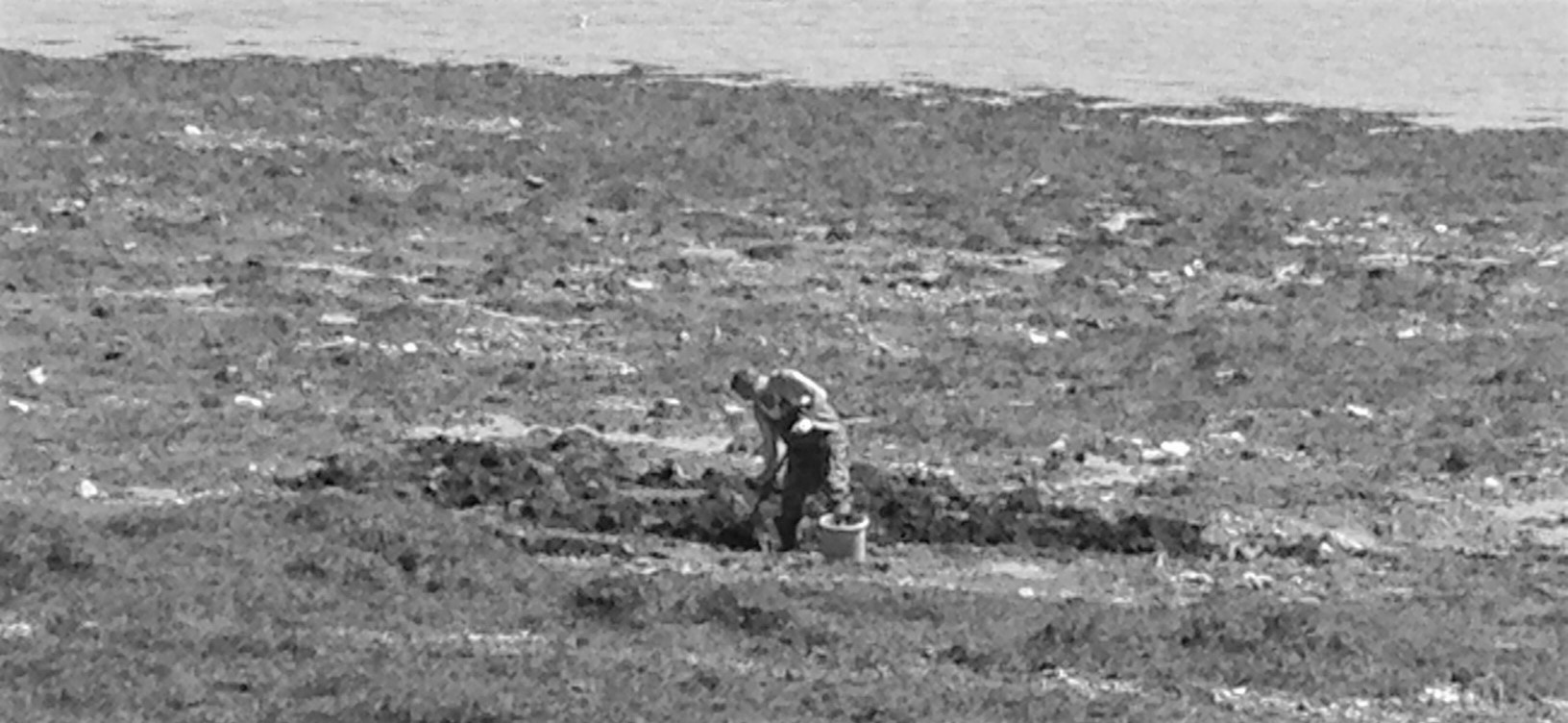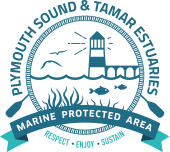The Plymouth Sound and Tamar Estuaries MPA offers some of the best sea angling in the country but the rules, legislation and regulations covering which fish can be caught where, when and how can be confusing. Here’s a summary of the rules that apply and what you need to do to stay within the law and help protect this important environment.
Fishing & Angling Regulations around the MPA
Rod licences
Rod licences aren’t required for sport fishing in estuarine areas, except for Salmon and Trout even if caught in the sea. Licences are issued by the Environment Agency – without one, any Salmon and Trout must be released.
Size restrictions
Size limits are set by the Cornwall IFCA and the Devon & Severn IFCA. They are legally binding and it is an offence to remove any fish from their districts below the specified minimum sizes.
Protected species
Some species, including Allis shad and Twaite shad, are fully protected. Targeting and retaining them is an offence and they must be released alive, immediately.
Freshwater eels
All species of freshwater eels must be released alive, immediately.
Bass
Areas of the Plymouth Sound & Tamar Estuaries are designated Bass nursery areas and fishing for Bass, or fishing for any species of sea-fish using sand-eels as bait from any vessel, is prohibited during certain periods:
– Rivers Tamar & Plym : all year.
– River Yealm : 30 April – 1 January.
Consumption
Any fish that you keep should be for your own consumption only. It is illegal to sell any fish that have been caught from an unlicensed vessel. If you suspect fish are being sold illegally contact the Maritime Management Organisation on 01752 228001.
Map of fishing regulations and restrictions
Different areas of the Plymouth Sound & Tamar Estuaries MPA are subject to different regulations and restrictions. View our map for more details about how recreational fishing and angling is regulated in the Plymouth Sound & Tamar Estuaries.
Enforcement bodies
There are five organisations responsible for legislation that controls fishing in Plymouth Sound and the Tamar Estuaries. The agencies, councils and harbour authorities work closely together to ensure the Plymouth Sound & Tamar Estuaries MPA is protected and conserved and this includes a number of restrictions, byelaws and permitting requirements affecting recreational fisheries.
Inshore Fisheries Conservation Authority (IFCA)
Cornwall IFCA and Devon & Severn IFCA have powers under the Marine and Coastal Access Act (2009) covering the Tamar, Tavy, Lynher, Plym and Yealm estuaries up to the tidal limits and out to six nautical miles offshore for the conservation of sea fisheries resources and the marine environment.
Environment Agency
The Environment Agency has powers under the Salmon and Freshwater Fisheries Act 1975 (SAFFA), the Marine and Coastal Access Act (2009) and the Eels Statutory Instruments 2010 within the estuaries and up to six nautical miles offshore for the protection of freshwater and migratory fish species. IFCA officers are cross-warranted with the EA.
Marine Management Organisation
The Marine Management Organisation, or MMO, enforces national law for Bass conservation in a Bass nursery area, together with the IFCAs.
Queen’s Harbour Master
Certain fishing activities are restricted, under the Port of Plymouth Order, in order to ensure naval activities are unimpeded whilst safeguarding the public and other users. This comes under the remit of the Queen’s Harbour Master.
Responsible Angling
Responsible anglers consider the rights of others, portray a positive image and help to protect and conserve our natural resources. Be a responsible angler, the waters of Plymouth Sound and Tamar Estuaries depend on it.
Catch and release – help future stocks
Help us to protect future fish populations by adopting a ‘catch and release’ approach to your sea angling.
Allowing juvenile fish to grow to full maturity helps protect the success of future stocks, providing more fruitful angling grounds. There is legal minimum size legislation both inside and out of the estuaries (EU, UK and local legislation) – see the lists of minimum fish sizes stipulated by Cornwall IFCA and for Devon & Severn IFCA.
Reducing angling debris
Popular spots for angling can be blighted by lost fishing line and tackle that can remain in the marine environment for many years, causing great harm to wildlife. Lobster, crab, fish and birds can get caught in lost fishing line, but lost tackle is also a hazard for visitors to the coast, other waterway users and even divers.

You can reduce the risk of accidental tackle loss by:
● Always using adequate equipment for the site and conditions
● Using a strong leader knot and a heavier main line than the hook length
● Using fine wire hooks that will bend under pressure rather than snag underwater
● Building a lead lift into the rig – this will help the rig to plane to the surface clear of snags
● Using a strong line between the weight and the main line
Reducing tackle loss can save you time and money, as well as helping the environment. For more tips, take a look at the Angler’s Trusts Tips for Reducing Tackle Loss.
If you’re fishing from the shore and already taking your own litter and unwanted tackle home with you, why not spend a couple of minutes picking up other litter in the area around you? A couple of minutes, or even just a couple of extra items of litter, can help to restore and maintain the beauty of our coastline and estuaries, as well as creating a safe haven for wildlife.
Responsible Angler's Code
Responsible anglers:
● Know and obey the fishing regulations
● Do not endanger themselves or others
● Keep only the fish they will use for the table
● Return their catch and release fish with minimal damage by using barbless hooks, minimal handling with a wet cloth and a landing net
● Record their catch on Fish Recording
● Leave a place cleaner than it was found
● Dispose of fishing line properly
● Do not trespass
● Are courteous to others
Bait Collecting around the Tamar Estuaries
The shores of the Plymouth Sound & Tamar Estuary MPA are delicately balanced and complex ecosystems. Mudflats and sandflats are designated features of the Special Area of Conservation, as well as protected feeding grounds for birds in the Special Protection Area. You can help to preserve bait collecting grounds for future generations by observing some simple guidelines to minimise disturbance and keep collection sustainable.
Restrictions
Bait digging for personal use does not require a licence and is unrestricted around the Tamar Estuaries in most cases, with the following exceptions:
● An area off Saltash where, under Cornwall Council local byelaws, bait digging is not permitted.
● Bait digging within the tidal areas of the Special Protection Areas of St Johns Lake, Lynher Estuary, Tamar and Tavy Estuaries will need consent from Natural England.
All bait diggers should do so responsibly and should not dig around moorings or in commercial shellfish beds.
The Bait Collectors' Code

● Back fill all diggings and replace all rocks and stones. This minimises disturbance to the animals left and does not interfere with other beach users.
● Avoid digging close to boat moorings, slipways or sea walls. This prevents conflict with other users and reduces potential undermining of the structures.
● Obtain permission before crossing private land and preferably use rights of way. This safeguards access to the worm beds for the future.
● Do not dig in eelgrass beds or in the upper shore areas. This protects our sensitive habitats and the lugworm nursery areas.
● Put rocks back as you found them especially when collecting peeler crabs. Take care not to trap seaweed under the rocks.
● Be sensitive to feeding birds and avoid unnecessary disturbance.
● Always get landowners permission before laying crab traps and lay them at a low angle to reduce visual impact.
● Only take what you can use or keep, and leave undersized worms: 10cm for Lug and 15cm for King Rag. Avoid digging in April and May as King Rag are spawning and release any bright green worms as they are spawning.
● Do not take crabs in berry (egg bearing) or prawns that are egg bearing. Release crabs that are too small (the shell the size of a £2 coin) and be aware that edible crabs are subject to a legal minimum size.
● Observe sensible safety precautions on the muddy shores.
● Avoid digging alone; leave location details and expected return time with a responsible adult; carry a mobile phone, whistle and rope.
(Reproduced with acknowledgements to Plymouth Federation of Sea Anglers Clubs and Helford Voluntary Marine Conservation Group).
Permits & byelaws
Regulated by the Inshore Fisheries Conservation Authorities
There are a number of byelaws in place in the Plymouth Sound and Tamar Estuaries, and permits must be obtained for a number of activities, including recreational potting, netting, and diving for lobster, crab or scallops. Keep up to date by visiting the regional IFCA websites.
